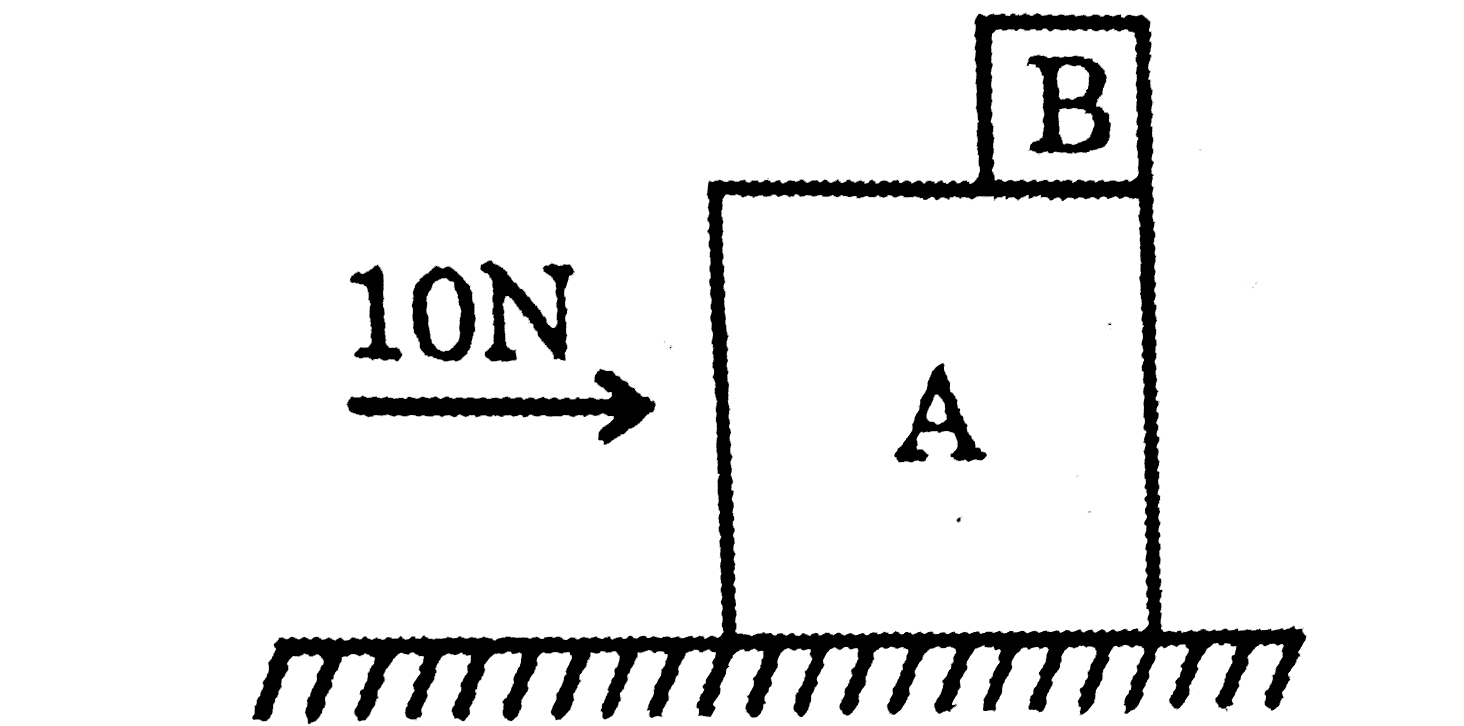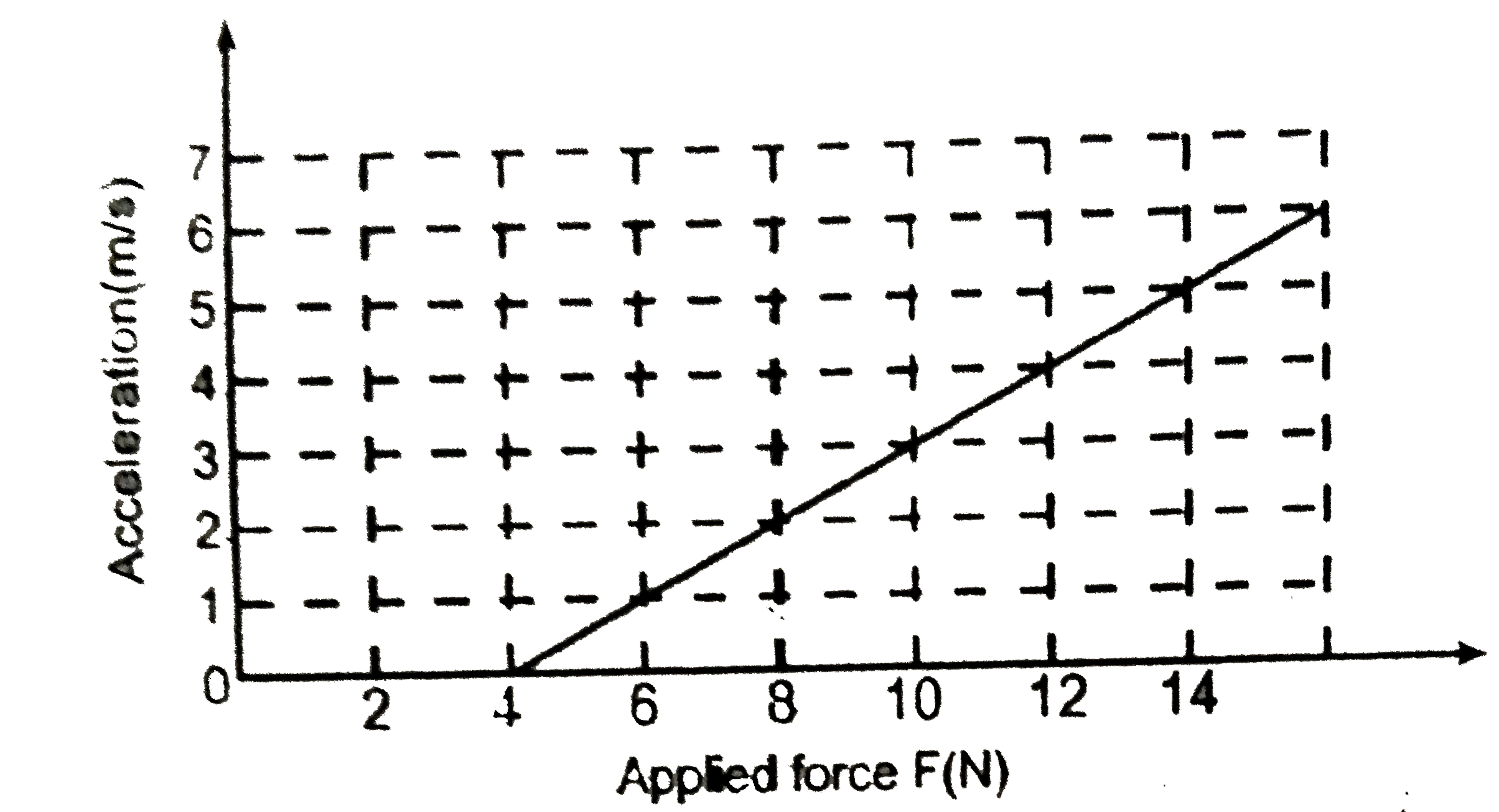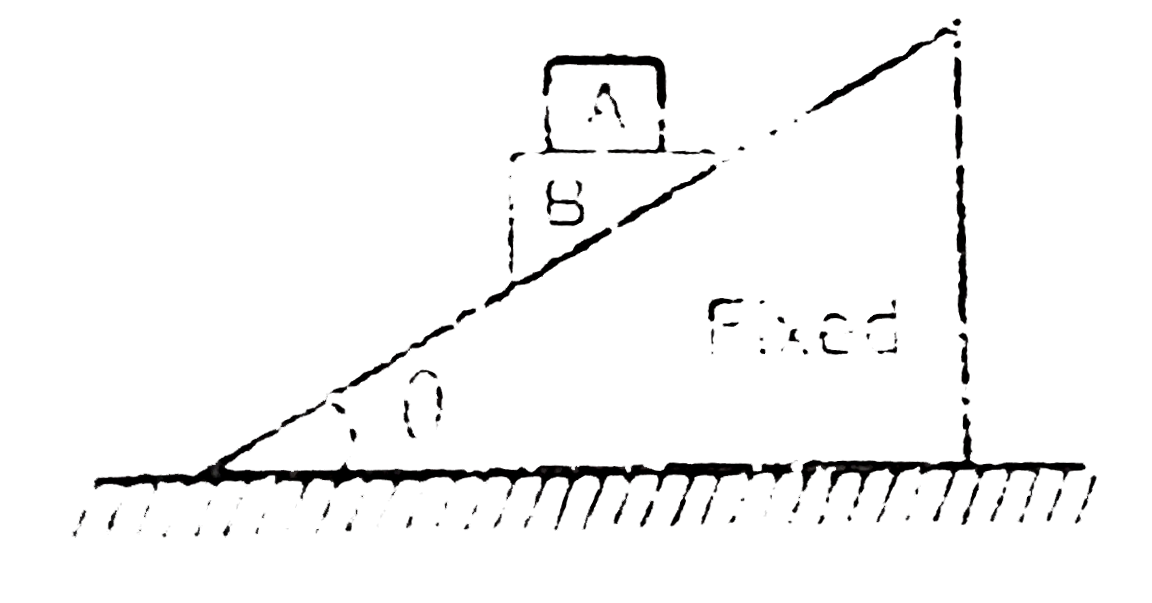In a figure shown mass of A and B is equal to M each. Friction between B and lowermost surface is negligible. Initially both the blocks are at rest. The dimensions of the block A are very small. A constant horizontal force F is applied on the blocks B and both the blocks start moving together without any relative motion. Suddenly, the block B encounters a fixed obstacle and comes to rest. The block A continues to slide on the block B. The block A just manages to reach the opposite end of the bolck B. What is the coefficient of friction between the two blocks? (Required length are shown in figure)

FMg
2FMg
F2Mg
none of these
The correct Answer is:A
Velocity of upper block when lower block hits an obstacle,
v=√2al=√2F2Ml=√FlM
Now after collision retardation of upper block wr.t earth.
a=muMgM=mug
∴v2=u2+2as
0=FlM−2mugl2⇒mu=FMg
Topper's Solved these Questions
- CENTRE OF MASSBOOK - CENGAGE PHYSICSCHAPTER - CENTRE OF MASSEXERCISE - Multiple Correct
25 Videos
- CENTRE OF MASSBOOK - CENGAGE PHYSICSCHAPTER - CENTRE OF MASSEXERCISE - Assertion - Reasoning
2 Videos
- CENTRE OF MASSBOOK - CENGAGE PHYSICSCHAPTER - CENTRE OF MASSEXERCISE - Subjective
23 Videos
- CALORIMETRYBOOK - CENGAGE PHYSICSCHAPTER - CALORIMETRYEXERCISE - Solved Example
13 Videos
- DIMENSIONS & MEASUREMENTBOOK - CENGAGE PHYSICSCHAPTER - DIMENSIONS & MEASUREMENTEXERCISE - Integer
2 Videos
Similar Questions
The coefficient of static friction between the two blocks shown in figure is μ and the table is smooth. What maximum horizontal forced F can be applied to he block of mass M so that the block move together?

View SolutionA small block B is placed on another block A of mass 5 kg and length 20 cm. Initially, the block B is near the right end of block A. A constant horizontal force of 10 N is applied to the block A. All the surfaces are assumed frictionless. Find the time elapsed before the block B separates from A.

View Solution
Knowledge Check
A force F is applied on block A as shown in the figure. The contact force between A and B and between the blocks B and C respectively are (Assume frictionless surface)
 AF7,2F7B6F7,4F7CF,F7D4F7,6F7
AF7,2F7B6F7,4F7CF,F7D4F7,6F7Two blocks A and B are as shown in figure. The minimum horizontal force F applied to the block B for which slipping behins between B and ground is :
 A20NB120NC150ND170N
A20NB120NC150ND170NA block of unknown mass is at rest on a rough, horizontal surface. A horizontal force F is applied to the block. The graph in the figure shows the acceleration of the block with respect to the applied force. The mass of the block is
 A1.0kgB0.1kgC2.0kgD0.2kg
A1.0kgB0.1kgC2.0kgD0.2kg
A small block B is placed on block A of mass 5kg and length 20 cm. Initially block B in near the right end of block A .A constant horizontal force of 10N is applied to the block A All surfaces are smooth . Find the time elapsed (in sec) before blocks B separates from A.

View SolutionInitially, both the blocks are at rest on horizontal surface as shown in the figure. Find the minimum value of force F in (N) so that sliding starts between the blocks (g=10ms−2)

View SolutionOn a smooth horizontal surface a block A of mass 10kg is kept. On this block a second block B of mass 5kg is kept. The coefficient of friction between the two blocks is 0.4 .A horizontal force of 30N is applied on the lower block as shown. The force of friction between the blocks is
View SolutionTwo block A and B are as shown in figure. The minimum horizantal force F applied to the block B for which slipping begins between B and ground is :

View SolutionBlock 'A' is placed ober the block 'B' as shown in the figure. Wedge is fixed and there is no friction. Between block 'B' and fixed inclined. Force of friction on the block 'A' is

View Solution
